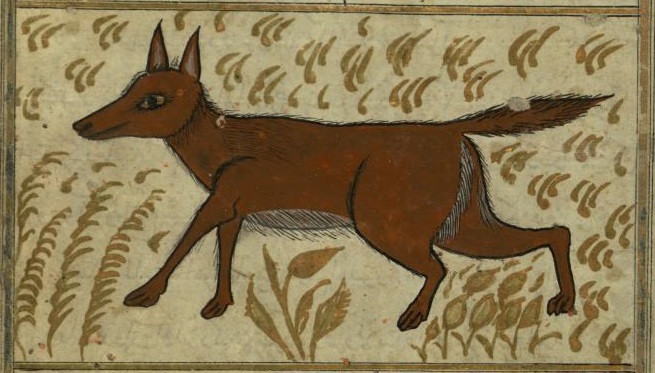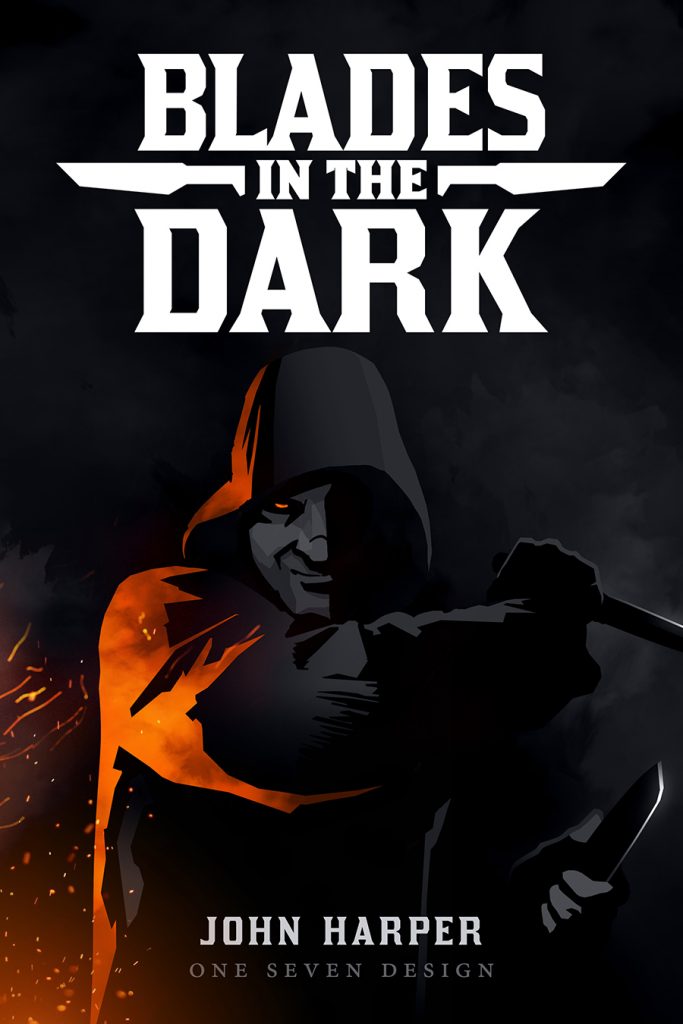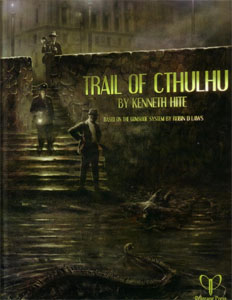Session 15A: The Labyrinth’s Machines
…and then arcs of purplish electricity began to leap between the bulb-tipped rods protruding from the machinery in the center chamber and the rods in the coffin chambers. From there, the arcs converged on the coffins themselves. The electrical bolts danced with a horrible beauty, filling the three chambers with harsh light that seemed barely dimmed by the smoky glass.
Since writing the Three Clue Rule, I’ve spent just over a decade preaching the methods you can use to design robust mystery scenarios for RPGs that can be reliably solved by your players.
 Now, let me toss all of that out the door and talk about the mysteries that your players don’t solve. And that, in fact, you’re okay with them not solving!
Now, let me toss all of that out the door and talk about the mysteries that your players don’t solve. And that, in fact, you’re okay with them not solving!
Note that I did not say “that you WANT them not to solve.” And there’s an important distinction there: If there’s a mystery you don’t want the PCs to solve (for whatever reason), then you simply don’t include the clues necessary for them to solve it. That’s not what we’re talking about here: These are mysteries that the PCs can solve. They just don’t.
And that’s OK.
In fact, it can greatly enhance your campaign.
You can see examples of this in the current campaign journal with the strange machinery the PCs investigate and are, ultimately, unable to fathom.
“So what did it do?” Elestra wondered.
“Without occupants for the coffins, most likely nothing,” Ranthir said.
First, why is this OK?
Because the mystery is structurally nonessential. There is something to learn here, but the failure to learn it does not prevent the scenario from continuing.
When we, as game masters, create something cool for our campaigns, there is a natural yearning for the players to learn it or experience it. But that’s a yearning which, in my opinion, we have to learn how to resist. If we force these discoveries, then we systemically drain the sense of accomplishment from our games. Knowledge is a form of reward, and for rewards to be meaningful they must be earned.
Second, why can this be awesome?
The technique I’m suggesting is that your scenarios can be studded with literally dozens of these nonessential mysteries. At that point, it becomes an actuarial game. When including a bunch of these in a dungeon, for example, it becomes statistically quite likely that the PCs won’t solve all of them. (They might, but they probably won’t.) And the ones they don’t are going to create enigma; they’re going to create a sense of insoluble depths. Of a murky and mysterious reality that cannot be fully comprehended.
And that’s going to make your campaign world come alive. It’s going to draw them in and keep them engaged. It will frustrate them, but it will also tantalize them and motivate them.
It should be noted that one of the things that I think makes this work is that these mysteries are, in fact, soluble. I think that, on at least some level, the players recognize that. And the fact that there is, in fact, a solution has a meaningful impact on how you design and develop your campaign world.
(There’s also a place for the truly inexplicable. My 101 Curious Items is an example of that. But it’s a different technique and its effect is distinct.)
In the end, that’s really all there is to it, though: Spice your scenarios with cool, fragile mysteries that will reward the clever and the inquisitive, while forever shutting their secrets away from the bumbling or unobservant. When the PCs solve them, share in their excitement. When the PCs fail to solve them, school yourself to sit back and let the mystery taunt them.
If you’re wondering what one of these little mysteries looks like when the PCs solve it, check out Session 10 when they’re confronted with the gory remnants of an ancient tragedy:
When they approached the corpses they discovered that they were just two among many: Rounding the corner into the larger room they saw more than a dozen humanoid corpses strewn around the room. In the center of these corpses a massive, wolf-like corpse lay – it, too, had been horribly burned until its remains were nothing more than charcoal which had endured the ages.
Investigating the other chamber flanking the door of glass and bronze revealed an even stranger sight: Shards of iron had been driven with seemingly random abandon into the walls of the room. They recognized this iron: It was of the same type used in the cages they had seen before.
“Did something cause one of the cages to explode?” Elestra said.
“Or explode out of it?” Ranthir hypothesized.
“Like that creature in the other room?” Elestra said.
In this case, you can see how the PCs apply information they’ve gained from other encounters within the Labyrinth to shed light on the current forensic analysis. I hadn’t really planned that, per se. I just knew what the story was behind this room and how that story tied in with the rest of the complex. So when the players started asking questions about the metal fragments in the walls, I knew they were related to the cages they’d already encountered.
Note that this specifically works because these aren’t purely random bits of dungeon dressing. These nonessential mysteries aren’t just unrelated puzzles: They’re all part of the scenario, which inherently means that they’re also related to each other. Thus, as the PCs solve some of them and fail to solve others, what they’re left with is an evolving puzzle with some of it pieces missing. Trying to make that puzzle come together and glean some meaning from it despite the missing pieces becomes a challenge and a reward in itself.
This advice doesn’t just apply to dungeon scenarios, either. Any scenario can have these nonessential background mysteries woven around its essential structure: What’s the true story of how the Twelve Vampires came to rule Jerusalem? How did the Spear of Destiny end up in that vault in Argentina? What exactly was Ingen doing on Isla Nublar in Jurassic Park III? Who left these cryptic clues painted on the walls of the Facility?
In general, though, don’t think of this as something “extra” that you’re adding to the scenario. This stuff will usually arise organically out of the scenario as you’re designing it: You need to figure out what happened to the Isla Nublar facility, for example, to build your dinosaur island hexcrawl around its ruins.
This technique, therefore, can also help you avoid one of my pet peeves in scenario design: The incredibly awesome background story that the players have no way of ever learning about. Look at the background you’ve developed for the scenario: If there are big chunks of it which are not expressed in a way which will allow the players to organically learn about it, figure out how the elements of that background can be made manifest in the form of nonessential mysteries.
In the case of the Laboratory of the Beast, I knew that this section of Ghul’s Labyrinth had been used to work on several distinct research projects. Every lab, therefore, could be a separate little mini-mystery revealing exactly what Ghul’s arcanists had been working on down here and, thus, collectively also tell the story of these laboratories.



















